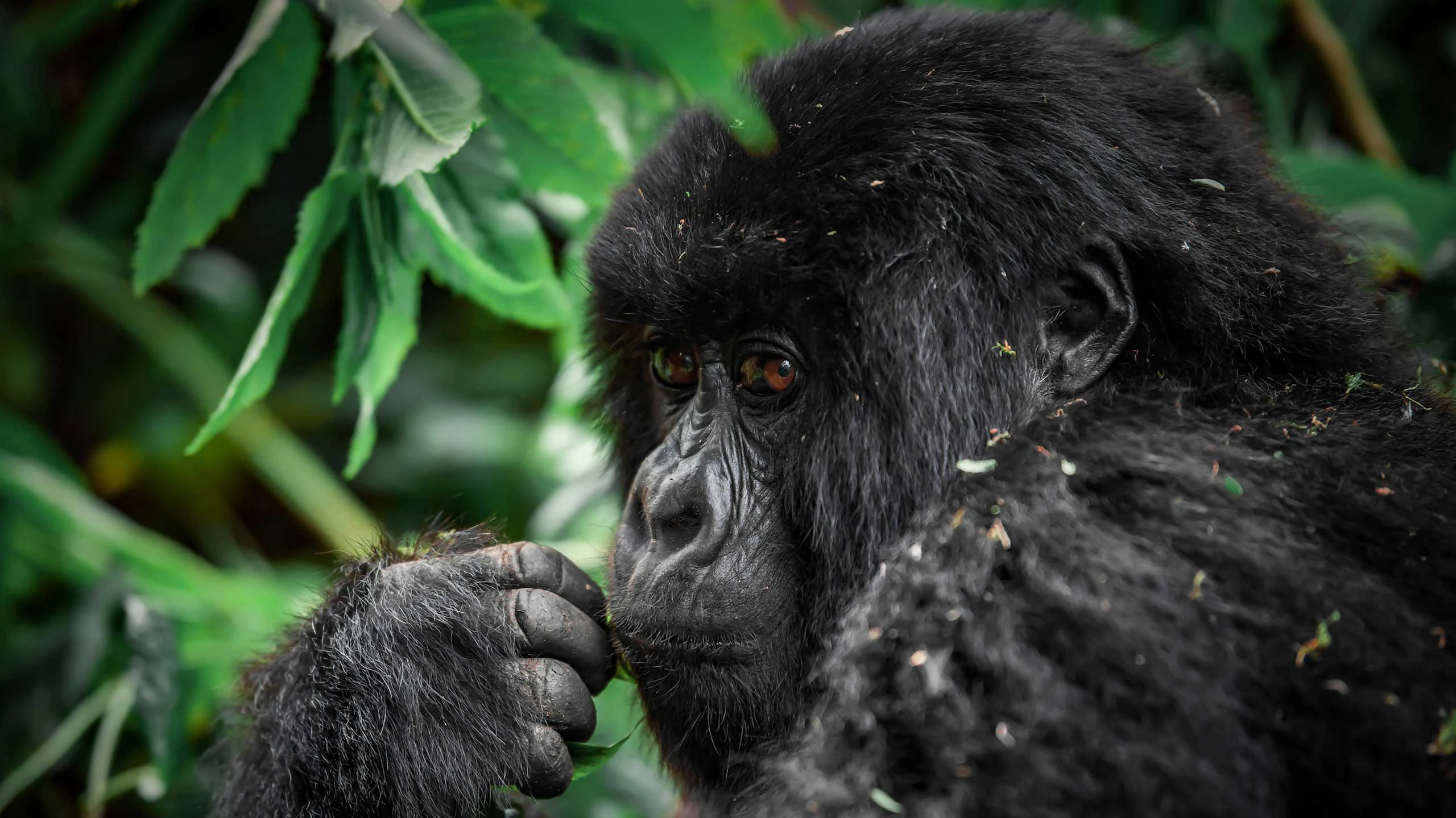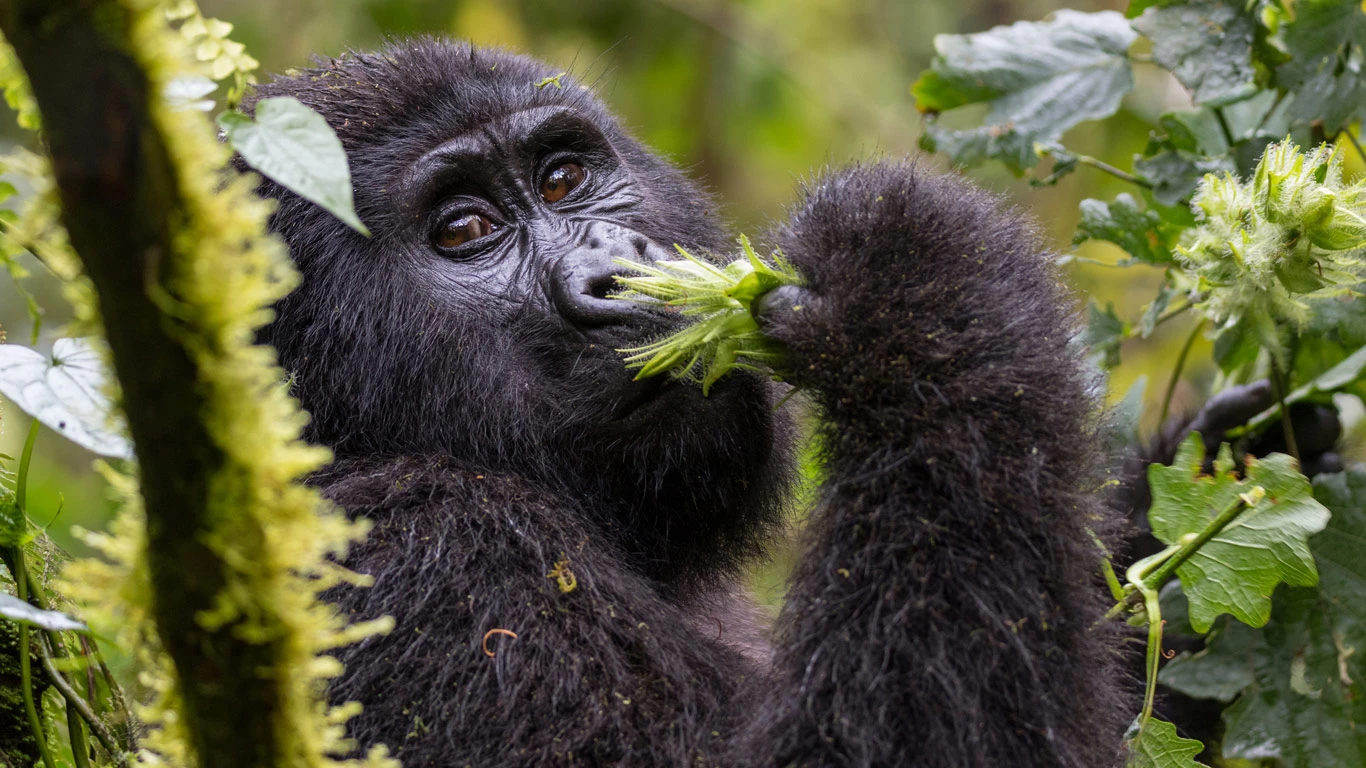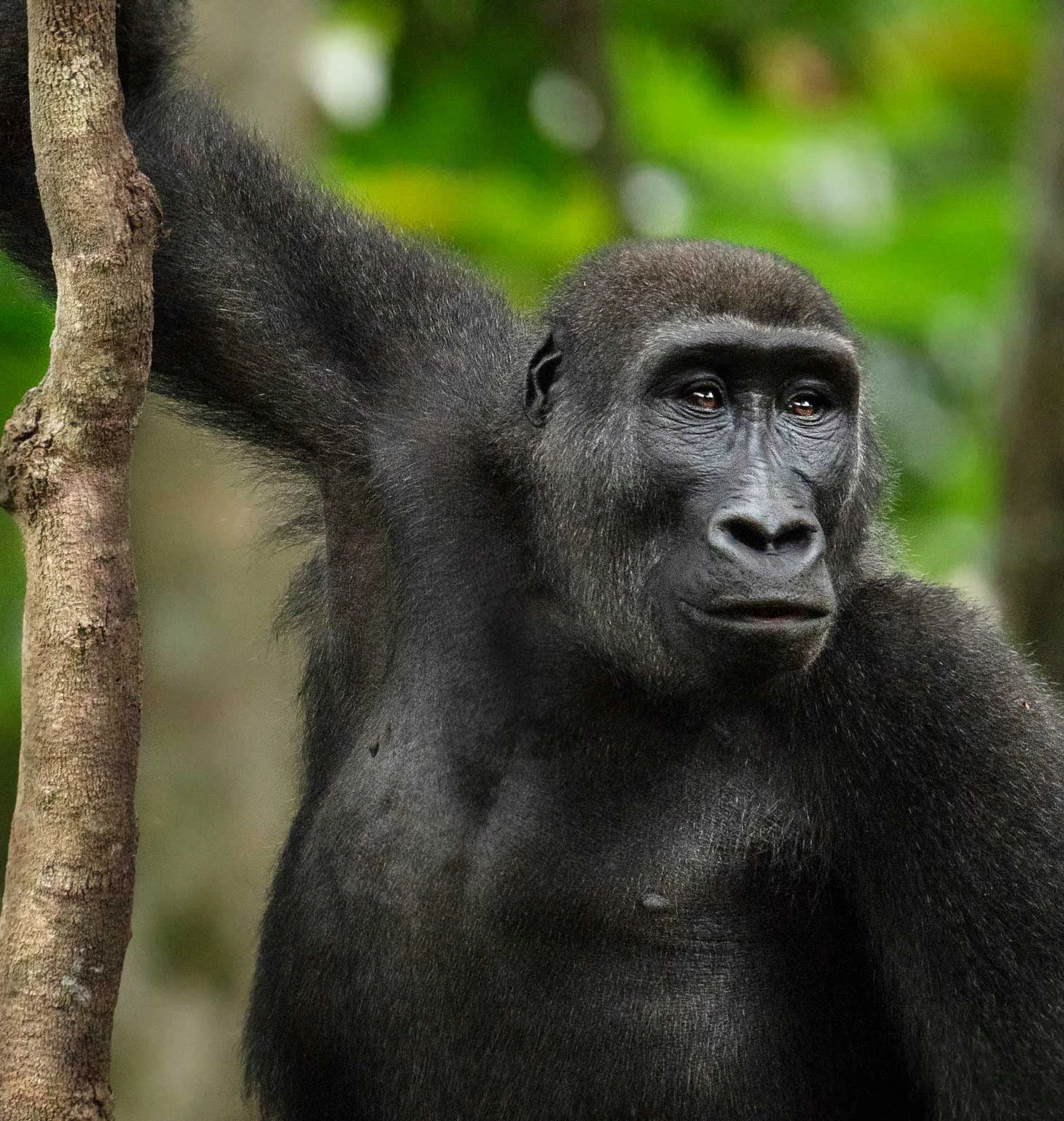
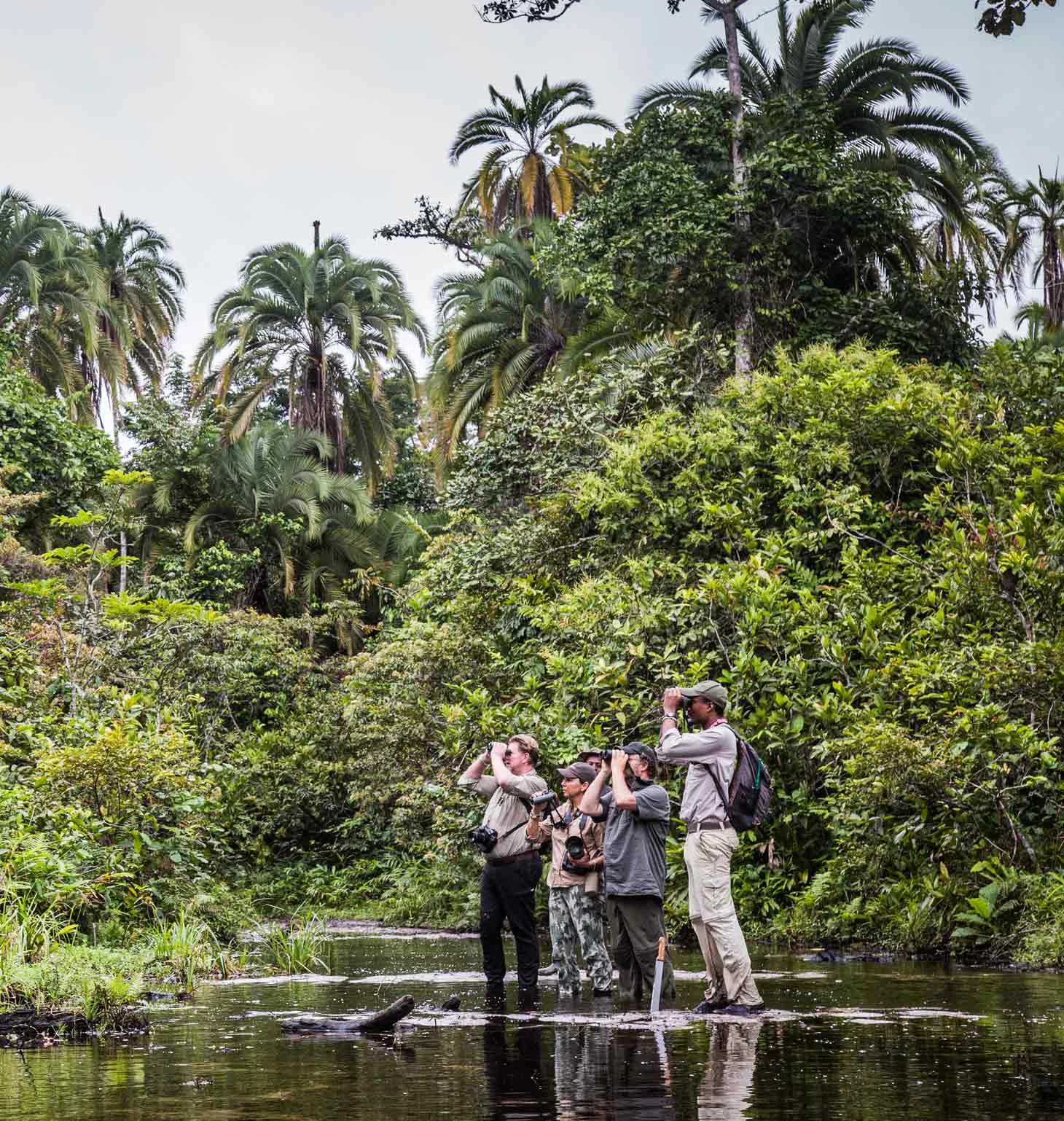
About Gorilla Trekking in Congo
Leaving the savannah behind, gorilla trekking in the Congo Basin takes you into the towering primary forests and through the rivers, baïs and grasslands of equatorial Africa. Stepping into the forest and sharing the same space as groups of Western Lowland Gorilla feels other-worldly and something that will be etched in my memory forever.
A Congo safari in search of western lowland gorillas is a very different experience from tracking gorillas in the mountains of Rwanda or Uganda. Taking place in Odzala-Kokoua National Park, this is a private experience with no more than two groups of four per day. The gorillas look slightly different to those in the mountains, with shorter, softer hair featuring tints of red on their heads giving them a slightly rakish air. Western Lowland Gorilla are arboreal herbivores and are therefore always on the go. This makes watching them far more interesting as they move through the canopy, seeking out trees and plants with the best fruit. Tracking them in this way feels more natural, allowing you to become attuned to the forest around you.
Odzala-Kokoua National Park:
There are not many places left in the world where you arrive with a frisson of excitement and spirit of adventure, (and certainly not when you come from Africa and have been traversing the continent for around fifty years!) However, Congo’s Odzala-Kokoua National Park is very much one of these places, evoking a sense of how travelling in Africa used to be.
Located in the remote northwest of the Republic of Congo, Odzala-Kokoua is one of Africa’s oldest national parks. Part of the Congo Basin, the park is a tapestry of pristine rainforests, savannahs, rivers and baïs. One of the world’s last intact ecosystems, Odzala is a haven for the Western Lowland Gorilla, Forest Elephant, Forest Buffalo and a host of other fauna and flora.
How to get to Odzala National Park ?
To reach Odzala, you fly to Brazzaville Maya Maya International Airport. From here it’s a two-hour charter flight to Mboko Airstrip followed by a three-hour road transfer to the private concession where the first camp, Ngaga, is located.
Ngaga Camp:
Odzala Discovery Camps has been managed by Congo Conservation Company (CCC) since 2012. They have several lodges as well as an incredible selection of dynamic and knowledgeable guides who transform your experience. The format here is fantastic as you have the same guide throughout the 7 – 11 night discovery tour, ensuring continuity throughout.
Western lowland gorillas are listed as Critically Endangered by the IUCN Red List. During 2019, CCC pioneered the first journeys connecting Odzala Discovery Camps with Sangha Lodge in Dzanga-Sangha Special Reserve, Central African Republic. Together – community, research and tourism are working towards a stronger future for the Congo Basin and all its inhabitants.
Situated in a dense forest, my first few nights are spent at Ngaga Camp. This is a focal point for world-class primate research as well as unforgettable gorilla encounters. The unique design of the camp reminds me of childhood treehouses, with beehive-shaped raffia huts and wraparound walkways perfect for gazing at the forest, listening to the abundant bird life and watching the myriad of butterflies. The staff looking after me are extremely knowledgeable and the food delicious – not something I expected on an adventure-filled safari in the middle of nowhere!
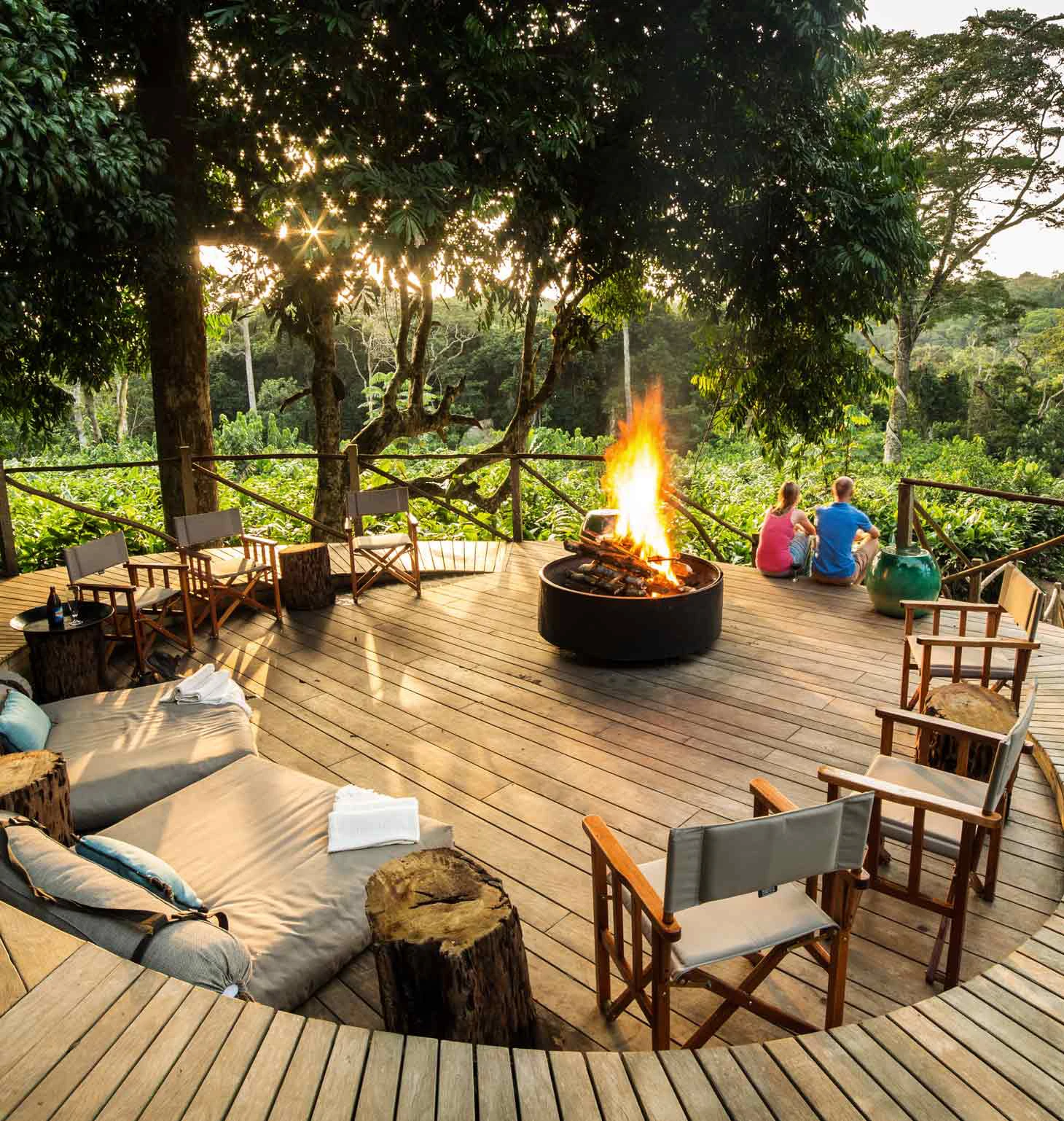
Ngagag Camp has wraparound walkways perfect for gazing at the forest.
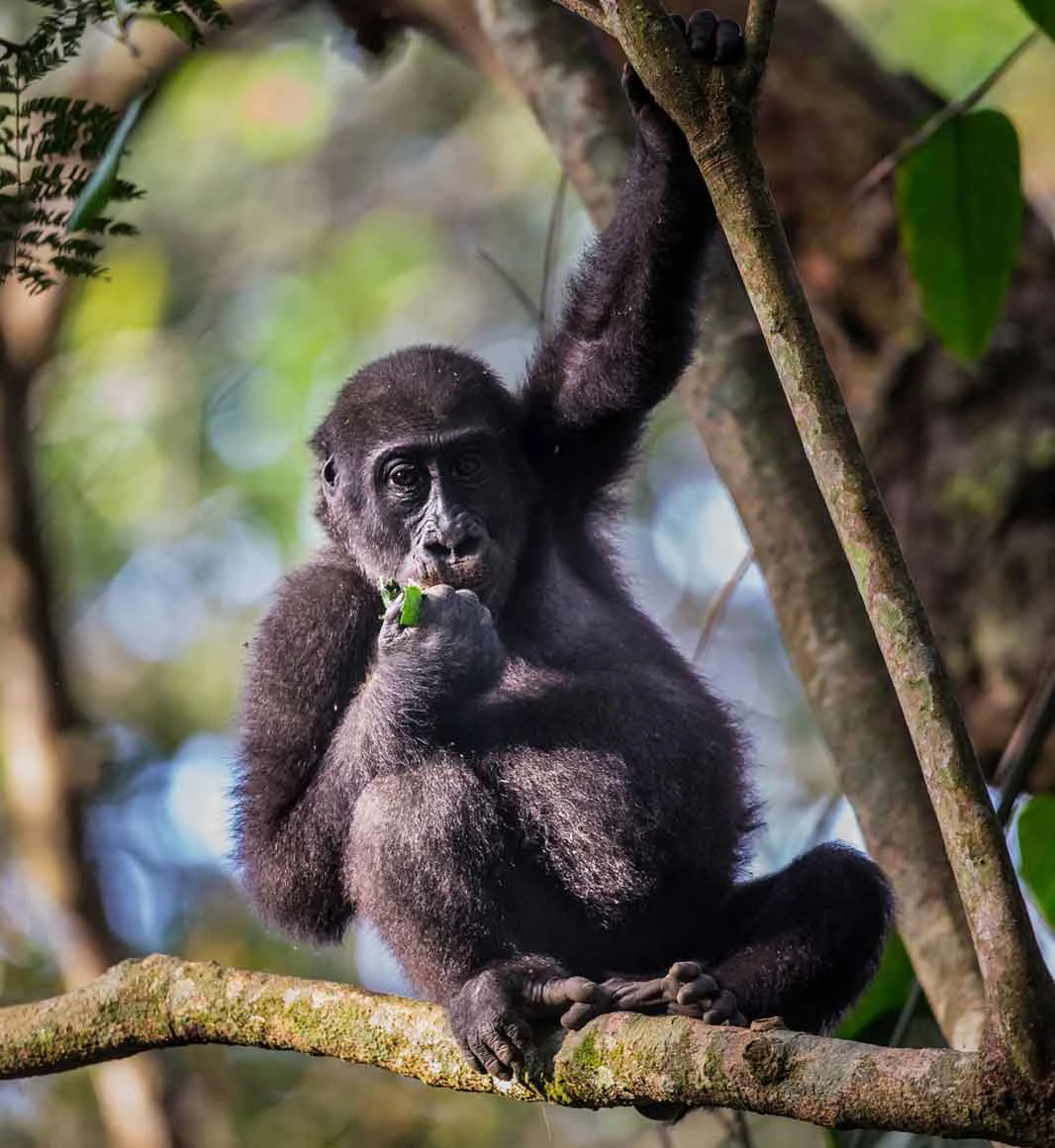
It’s an amazing sight to watch the gorillas frolicking in the trees and dining on fruits.
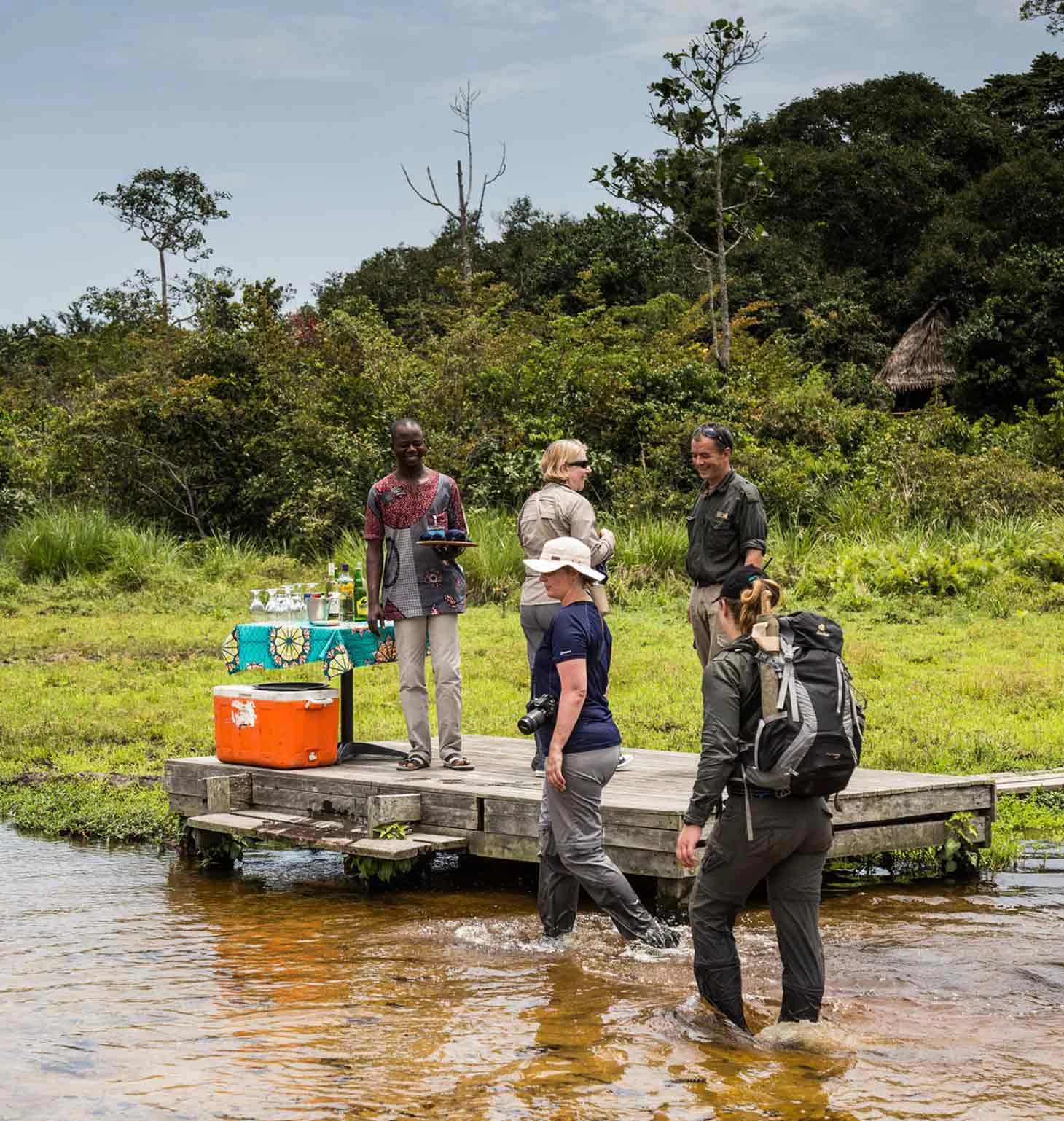
Welcome drinks await us on our arrival at Lango Camp.
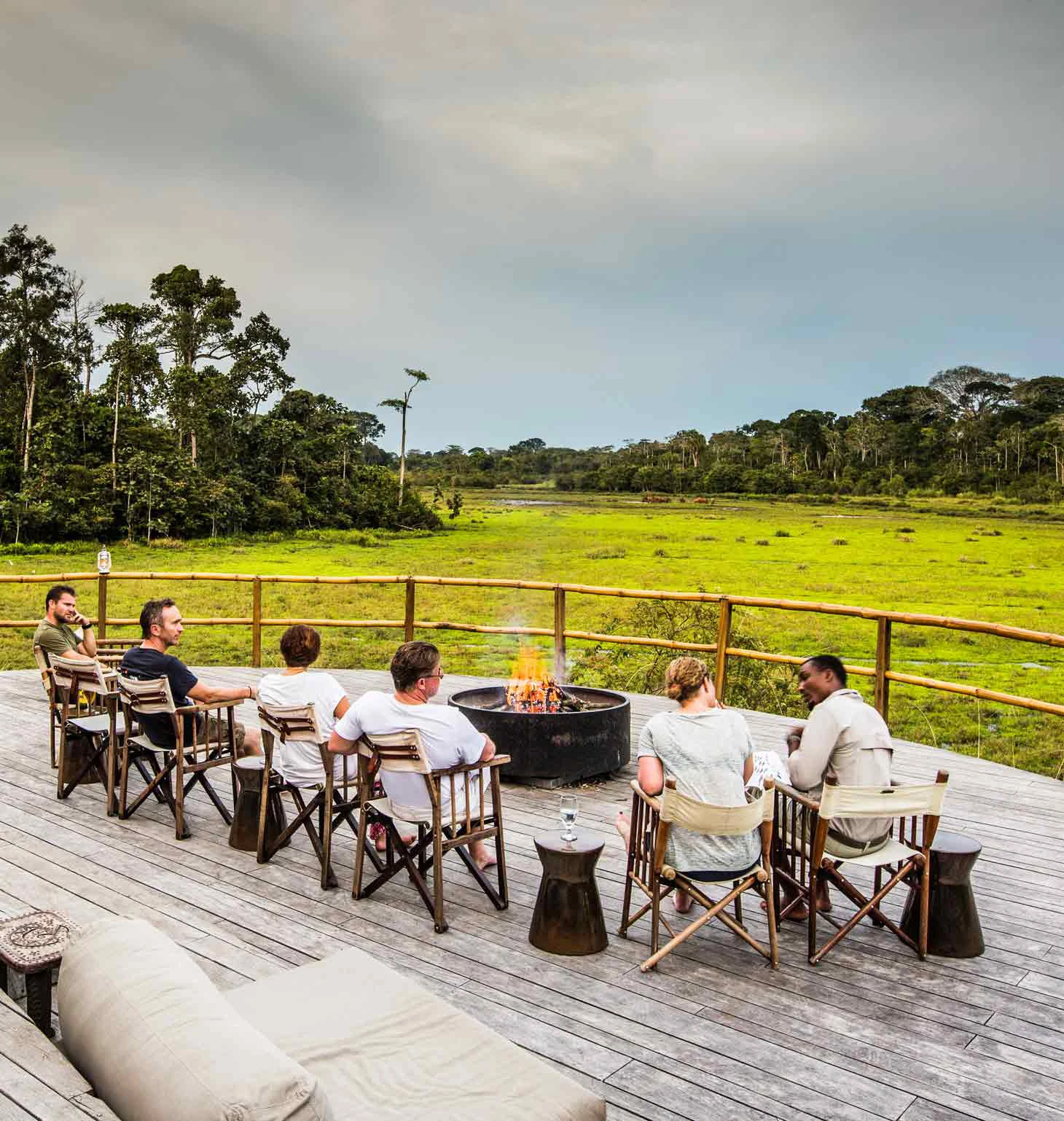
Watching the sunset with a gin and tonic in hand whilst herds of forest elephant congregated at the baï is a sight I will treasure forever.
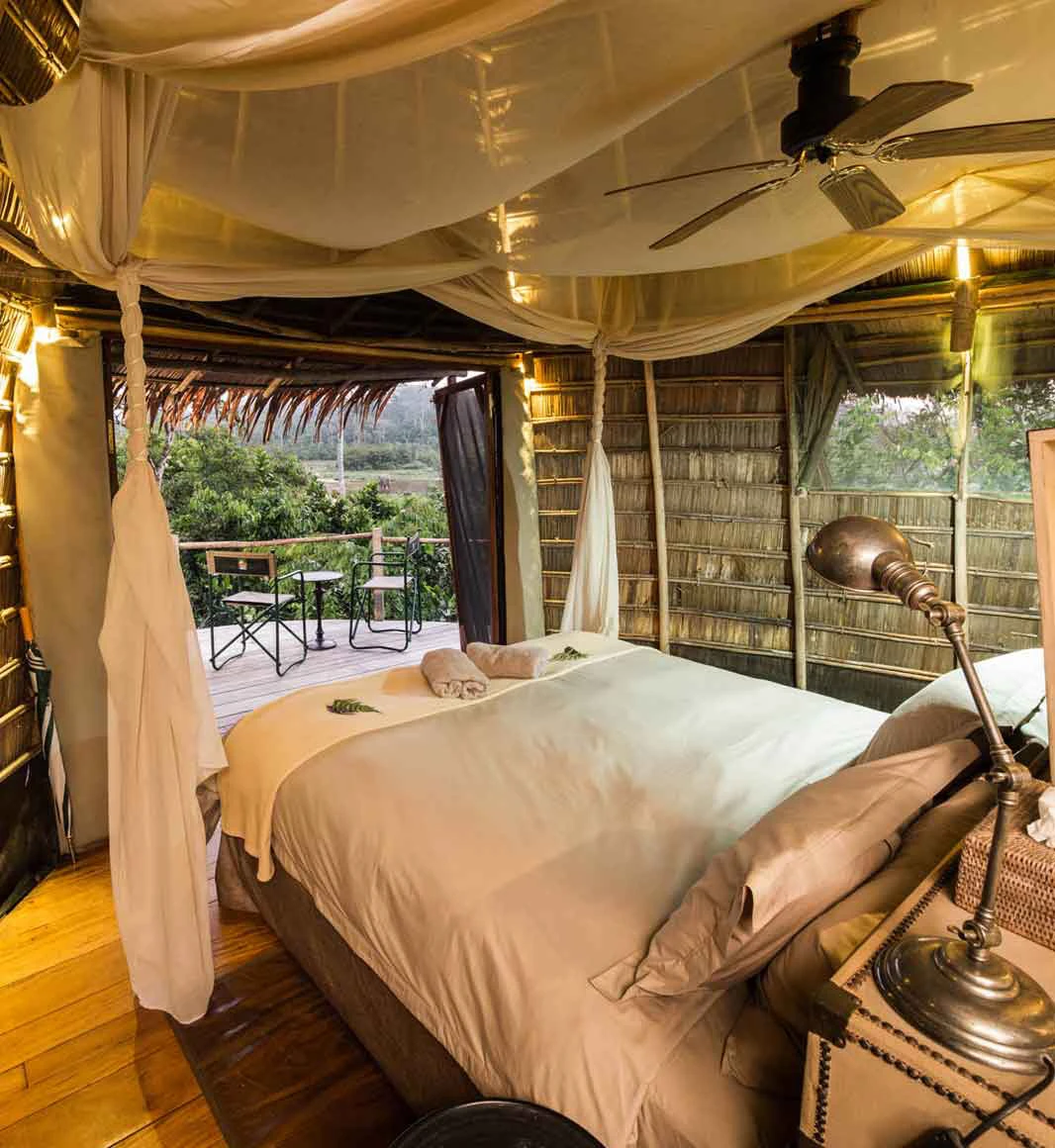
Bedroom suite at Lango Camp
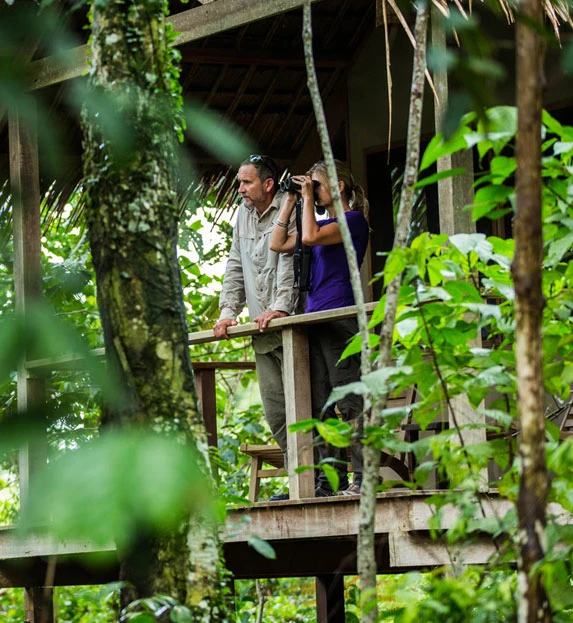
Mboko Camp provides excellent opportunities for sightings of the park’s wildlife.
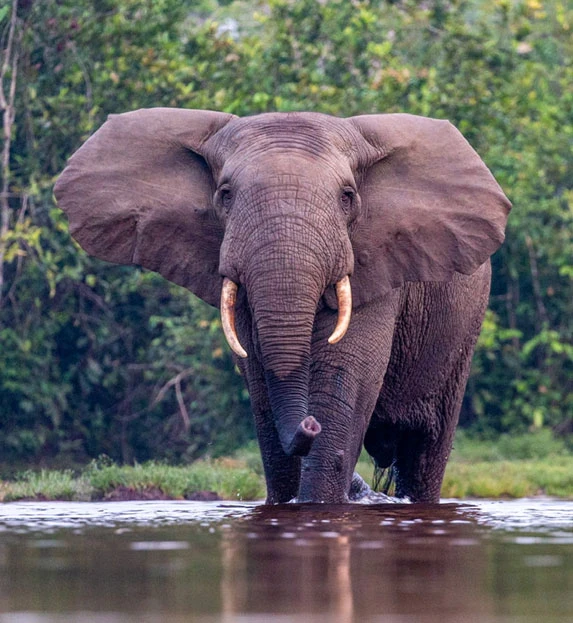
Enjoy sightings of elephant and buffalo during your stay.
"The excitement of trying to keep up with them whilst on foot, their shouts reverberating through the forest, is something that will stay with me forever."
What to Expect on a Gorilla Trekking Safari in the Congo
There are three habituated groups of gorilla here – two for tourists and one for researchers. The trackers (who are ex-hunters) have been with the gorilla primatologist, Magda, for the last 17 years. They can determine exactly which tracks belong to which group, despite the ground being covered in dry leaves – something I find remarkable.
The trek starts with a wake-up call at 5:00 am. On the first day, we simply walk out from camp but on the second day, we take a 20-minute journey by road to a narrow path to start our trek into the Marantaceae forest. The walking is easy, mainly on straight paths, and I am thrilled to see my first gorilla within the first hour. It is an incredible sight – sitting on the other side of the bush, listening to them beating their chests, clapping, watching them frolicking in the trees and dining on fruits.
We follow the gorillas through the forest, catching sight of them as they swing from branch to branch before disappearing into the undergrowth. The excitement of trying to keep up with them whilst on foot, their shouts reverberating through the forest, is something that will stay with me forever.
Lango Camp:
Having spent time with the gorillas in Ngaga, I continue my journey to Lango Camp. Getting here is an adventure in itself with a two-hour kayak down the Lekoli River, spotting African grey parrots, green pigeons and giant kingfishers as we paddle along. When it becomes too shallow, we continue on foot, arriving at camp in time for a sundowner. Situated on the edge of Lango Baï, the camp offers one of the most arresting views of any camp in Africa. Watching the sunset with a gin and tonic in hand whilst herds of forest elephant congregated at the baï is a sight I will treasure forever.
The camp itself has a different feel to Ngaga, with wraparound walkways and elevated chalets to maximise the views. The emphasis at Lango is more on birdlife and mammals. Prepare to get a little wet and muddy as many of the walks involve immersing yourself in the baïs of Lango, one of the few places in Africa where you can safely explore forest streams and marshes on foot.
A sense of humour and an adventurous spirit are required, but it feels like pioneering Africa – something that is harder to achieve these days in a world where urbanisation and homogenisation seem to be the norm.
Mboko Camp:
My final stop is Mboko Camp, a place of peace and adventure in equal measure. Tucked away under large trees on the banks of the Likeni River, Mkobo is the most rustic of the three camps. The rooms have open verandahs with mosquito netting where you can try and spot bushbuck or putty-nosed monkeys.
At Mboko, you can explore on foot, by vehicle or by boat. I go out on the river by boat – a fantastic way to spot birds and general wildlife. Watching as a small herd of three elephant including one calf crossed the river behind us is a definite highlight. During my stay at Mboko, I also see long-crested pangolin – the rarest of the three species in this area – which is incredibly exciting.
Photos: (©Kamba African Rainforest Experiences)
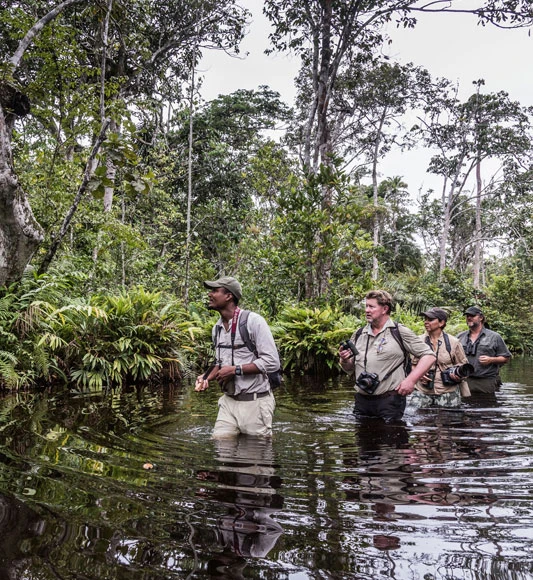
Where else should you visit on your Congo safari?
If you would like to extend your Congo gorilla safari, there are several options. Within the Republic of Congo, I suggest visiting the capital city, Brazzaville, with its modernised embankment, excellent restaurants and colourful Sapeur parades. Further afield, we recommend continuing on to the Central African Republic and the magnificent Sangha (Dzanga) Baï, with a river wider than the Zambezi and the greatest concentration of wild elephant. For more gorilla trekking opportunities, head to the mountains of Uganda or Rwanda.
Looking to follow in Nicola's footsteps?
